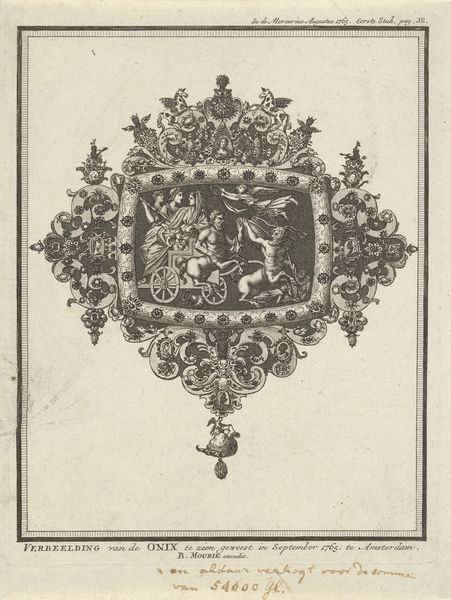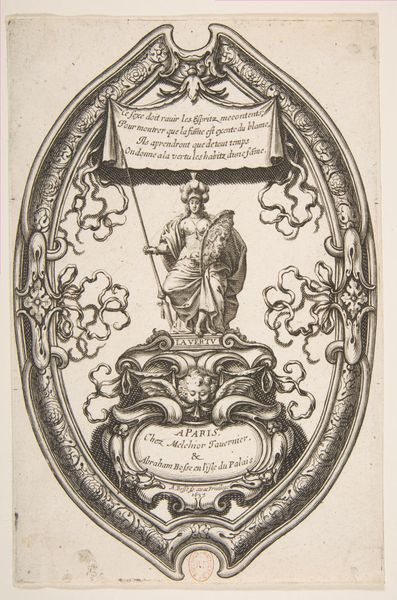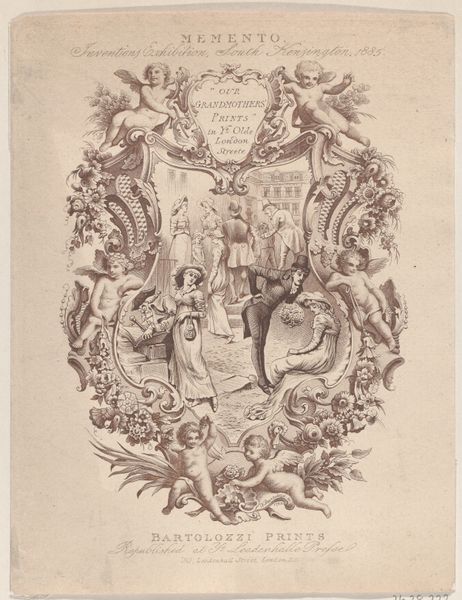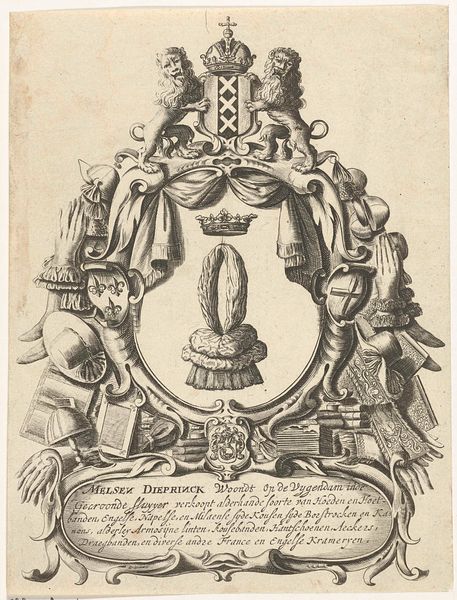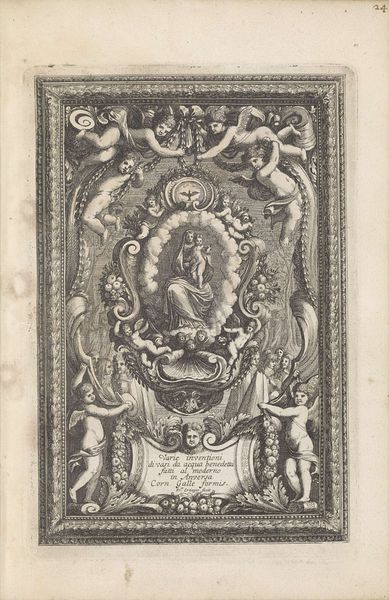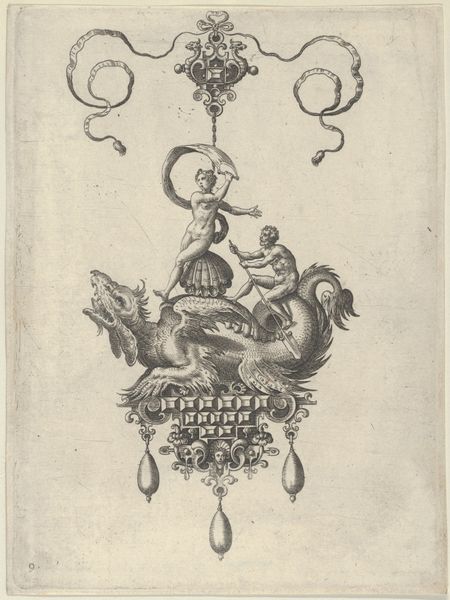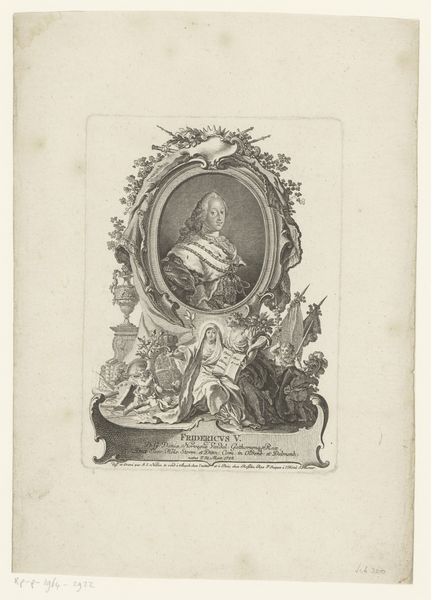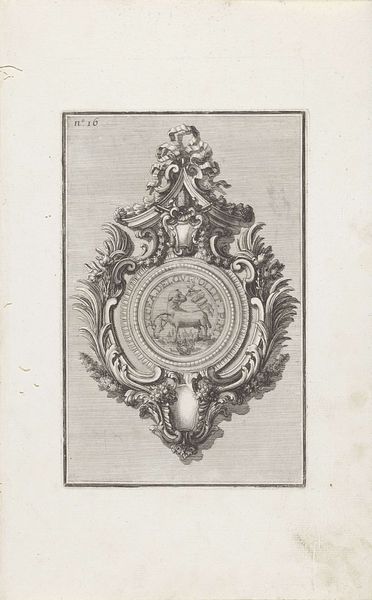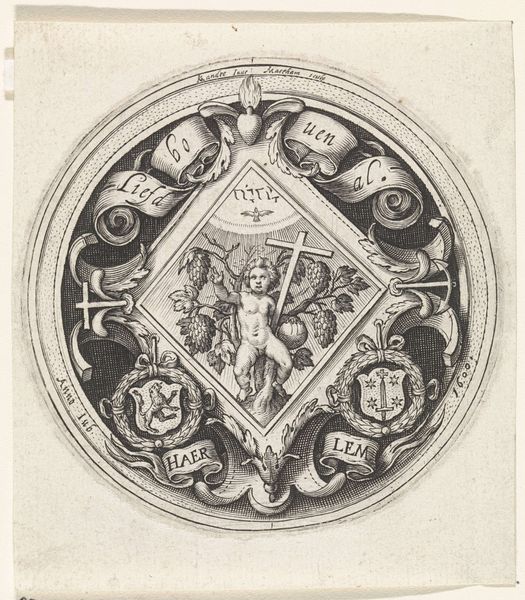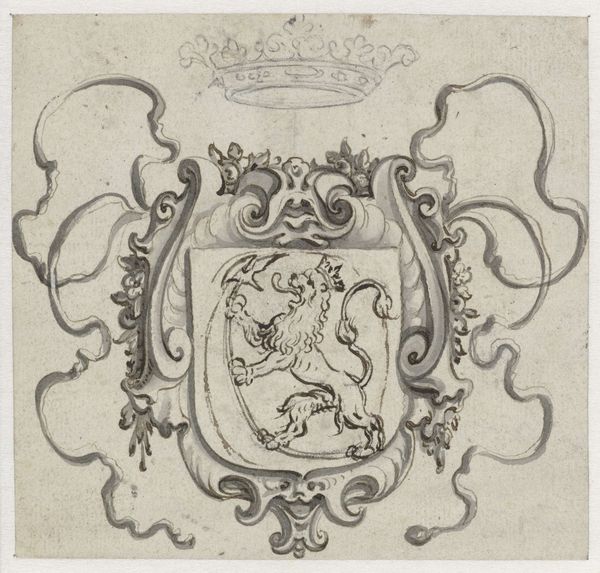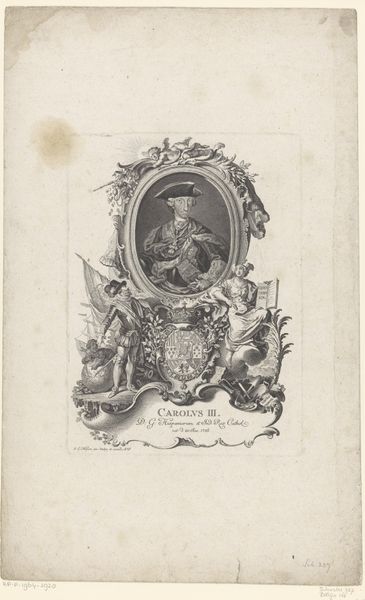
Trade Card for Sir Robert Peake, printer and publsiher 1630 - 1672
0:00
0:00
drawing, graphic-art, print, engraving
#
portrait
#
drawing
#
graphic-art
#
medieval
# print
#
figuration
#
line
#
engraving
Dimensions: Sheet: 7 15/16 × 6 1/2 in. (20.1 × 16.5 cm)
Copyright: Public Domain
Curator: Looking at this print, titled "Trade Card for Sir Robert Peake, printer and publisher," created between 1630 and 1672, it’s hard to miss the bold use of engraving to portray such detailed imagery on what would have been, effectively, an advertisement. What's your immediate reaction to it? Editor: It's striking. The black and white contrast is so stark, making the central image of St. George slaying the dragon quite dramatic. The tiny script bordering the oval adds a layer of intrigue – almost feels like encrypted marketing. Curator: Exactly! It’s so much more than mere advertising. Consider the material reality – this isn’t mass-produced lithography; this is a hand-crafted copper engraving, carefully designed and printed, elevating the act of selling into an artform in itself. The quality of labor really jumps out at you, doesn't it? Editor: Absolutely, but I also see the social currency at play here. Sir Robert Peake wasn't just selling books; he was curating a brand. By aligning his business with the iconography of St. George and employing a refined style, he's associating himself with British tradition and high culture. It is strategically building a market reputation. Curator: Good point. The production is so labor intensive. The very act of producing such a card suggests a higher value placed on the products and, by extension, Peake’s business itself. It shows us something important about the consumers of the day. Editor: That’s undeniable. It also seems to play a clever political game. Those initials and dates ringing the central image clearly represent rulers and their reigns. A statement perhaps on British lineage. Curator: It makes you wonder who could actually afford this level of marketing, too, doesn't it? We often don't talk enough about access to information in this period and what sort of literacy this card implies in both vendor and customer. Editor: Definitely. So, this isn't just a humble trade card but a carefully constructed symbol of status, knowledge, and national identity circulating in 17th century England. Curator: Agreed. Analyzing the materiality offers us new insights into a commercial practice but reveals much more about the socio-economic values of the time. Editor: Yes, looking at how it functions within a broader societal framework really enriches our understanding of its purpose.
Comments
No comments
Be the first to comment and join the conversation on the ultimate creative platform.
